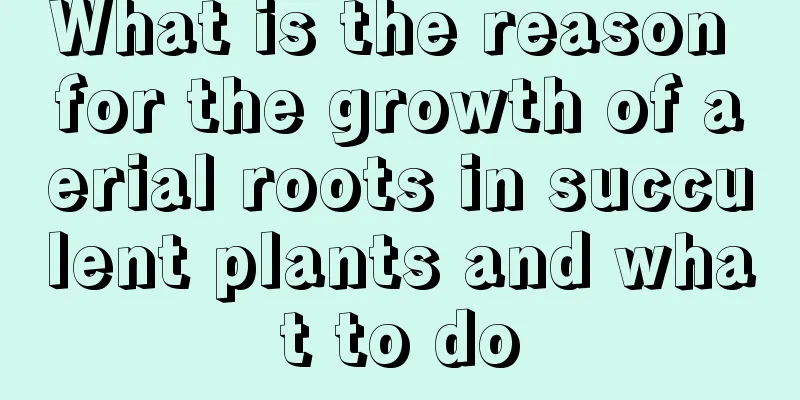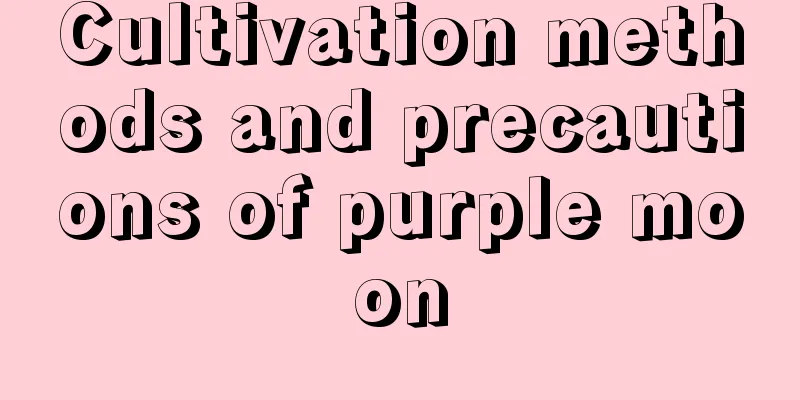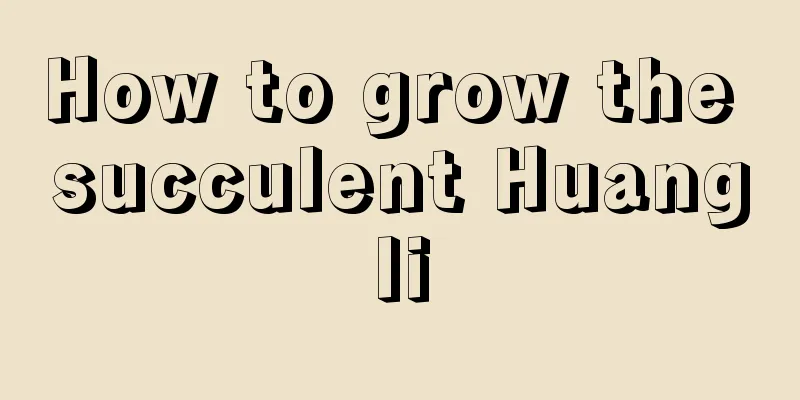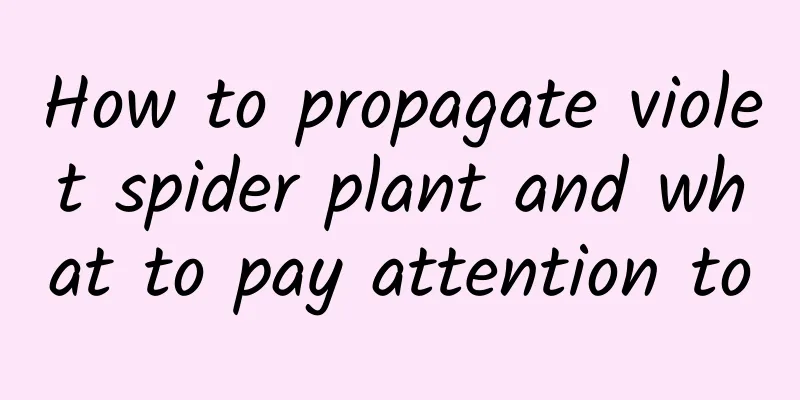How to control the excessive growth of sweet potato vines (why it is not recommended to turn the vines when planting sweet potatoes)
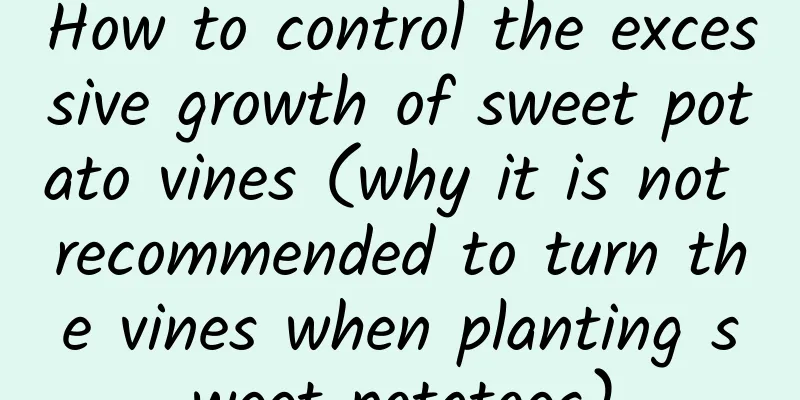
|
Sweet potato vines are also a treasure, and they are a good feed for livestock. It can be said that the whole body of sweet potato is a treasure, from roots, vines to stems and leaves, each of which can be fully utilized. The stems and leaves are very good dishes, and many hotels list them as green food. In rural areas, they are mostly used to feed pigs, cattle, sheep, etc. However, once the sweet potato stems grow too long, it will lead to an unbalanced distribution of nutrients, resulting in a decrease in the yield and quality of the tubers. Therefore, the growth of the stems must be controlled in time to promote the expansion of the tubers . How to control it? You should remember the following methods. First, nitrogen fertilizer should be used in moderation and potassium should be used as the main fertilizer to prevent the vines from growing too fast and not growing potatoes.Sweet potatoes grow from early July to late August, which is the period when the stems and leaves grow most vigorously. The tubers also expand rapidly and the leaves reach their maximum area. The field management during this period should be carried out in a way that both promotion and control are achieved. For plots with average fertility, the main focus should be on promoting stem and leaf growth and tuber enlargement. When applying topdressing, less nitrogen fertilizer and more potassium fertilizer should be applied. You can also use a mixture of 5% urea and 1% potassium dihydrogen phosphate as foliar fertilizer 1-2 times. Under high fertilizer and water conditions, sweet potatoes may grow too tall, and a variety of methods should be used to control this so that nutrients accumulate and are transported underground to promote tuber enlargement. Second, when the vines are all over the ground, lift the seedlings frequently to prevent the stem nodes from regenerating roots.When sweet potatoes enter the rainy season, if there is too much nitrogen fertilizer, the stems and leaves grow luxuriantly, the node roots are easy to breed, and the nutrients are dispersed, which is not conducive to the transport of photosynthetic products to the tubers. In the past, farmers used to turn over the vines of sweet potatoes, but this method is actually very unscientific. When crops grow, they need to receive more sunlight for their own needs, and their stems and leaves will be arranged in the best position. If we turn the seedlings, it will disrupt the optimal distribution of light energy for the leaves, reduce the leaves' ability to produce nutrients, and thus affect the yield. According to practice, there are many ways to prevent the growth of sweet potato stems and vines: One is to lift the vines instead of turning them over , usually 1-2 times is enough. In Weifang, people often use a bamboo pole or a wooden stick, insert it under the stems at the bottom of the ditch, and lift it up with force to break the nodes on the stems. This method does not damage the vines or disturb the leaf layer, and is beneficial rather than harmful. The second is to top the core. The third is pruning. The second and third methods are not used much. We now mainly use the fourth method, which is to spray plant growth hormones to control the excessive growth of sweet potato stems and vines, such as chlormequat, paclobutrazol, etc. Generally, spraying twice as required will have a good effect . Practice has shown that when spraying chlormequat and paclobutrazol, if the dosage is inappropriate, it will cause excessive growth control, affect the yield, and even cause large amounts of soil residues, affecting the growth of the next crop . I would like to recommend a method which can be used not only for sweet potatoes, but also for controlling the growth of peanuts. Everyone should be familiar with diniconazole , right? This is a fungicide that is effective against powdery mildew, rust, and black spot. It is a triazole fungicide that also has the effect of inhibiting crop growth. Compared with paclobutrazol, it is easier to control the dosage of diniconazole when using it to control the growth of peanuts and sweet potatoes. It will not cause growth cessation, leaf shedding, premature aging, or continued vigorous growth due to over- or under-control. The first application of diniconazole to control the growth of sweet potatoes is generally carried out during the ridge closing period, with 20-25 grams of 12.5% diniconazole per mu. The specific dosage depends on the climate, rainfall, growth potential, etc. It is usually sprayed after 4 pm on a sunny day. Then spray twice, each time with an interval of 7-10 days. When using diniconazole on peanuts, when the height of the peanut plant reaches about 30 cm, spray 20 grams per mu with 2 buckets of water. If there is still a trend of vigorous growth after 7-10 days, spray it for the second or third time. For plots with too vigorous growth, 25-30 grams per mu can also be used. Practice has proved that the application of diniconazole on sweet potatoes and peanuts can not only play a bactericidal role, but also control the growth of crops, which is both safe and increases yield. In short, it is generally not advisable to turn the vines of sweet potatoes, and it is better to lift the vines and control the growth of the plants with chemicals. However, whether it is lifting the vines or controlling the growth of the plants with chemicals, it must be flexibly controlled according to the variety and seedling conditions. For varieties that grow in clusters, have short vines, have fragile stems and vines, or have poor growth conditions of the above-ground parts, and the fields are well ventilated and have good light transmission, and have few adventitious roots on their stems and vines, or in dry weather conditions, it is not advisable to raise the vines or use chemicals to control growth. In addition, when the soil is fertile, the temperature is high and there is a lot of rain, and the field is closed, the vines can be properly lifted or controlled with pesticides. When lifting the vines, the damage to the stems and leaves should be minimized, and the stems and vines should be straightened to facilitate their continued normal growth. |
Recommend
The Flower Language of Miniature Coconut
The Flower Language of Miniature Coconut The flow...
How to plant Jacaranda seeds
1. Seed Collection The fruit ripening period of J...
How to grow tulips
Planting method Soil Preparation Tulips prefer sa...
Breeding methods and precautions of white pine
1. Soil It does not have high requirements for so...
Cultivation methods and precautions for potted osmanthus flowers (watering every few days indoors)
Sweet olive is also known as thousand-mile fragra...
Can hydrangeas be planted in the yard?
Can hydrangeas be planted in the yard? Hydrangeas...
Green radish and pennywort... I dug a hole and poured some water into it, and it suddenly grew wildly, with leaves bigger than 5 coins!
How does the green radish grow half soil and half...
Differences between daylilies and lilies
1. Different roots Hemerocallis is a plant of the...
How to propagate roses by cuttings
1. Choose buds When taking rose cuttings, choosin...
What is the best month to plant sunflower seeds in the north?
When to plant sunflower seeds in the north In the...
Which city's flower is the Kapok? When does it bloom?
1. Which city’s flower is the Kapok? Kapok is the...
8424Which month is the best for planting watermelons? Can they be planted all year round?
8424 What month is suitable for planting watermel...
How to eat carambola, taboos of eating carambola
1. How to eat 1. Eat it raw directly: It can be e...
Things to note when repotting the Tower of Ash
Repotting time for the Tower of Ash The seedlings...
What is the most profitable crop in rural areas in 2022 (What crops will make money and get rich quickly in the next five years)
What to plant in rural areas to get rich quickly ...



